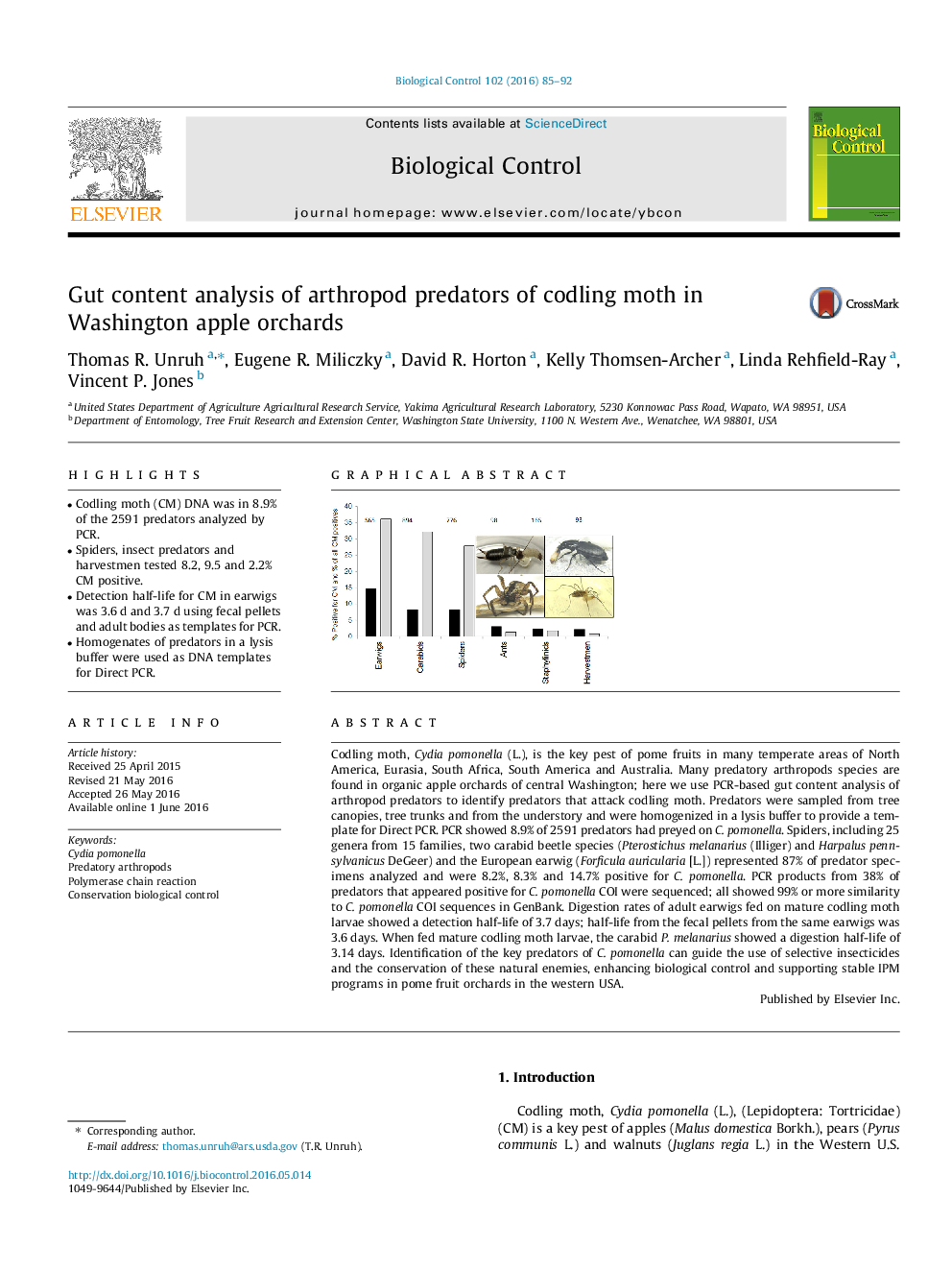| کد مقاله | کد نشریه | سال انتشار | مقاله انگلیسی | نسخه تمام متن |
|---|---|---|---|---|
| 4503570 | 1624232 | 2016 | 8 صفحه PDF | دانلود رایگان |
• Codling moth (CM) DNA was in 8.9% of the 2591 predators analyzed by PCR.
• Spiders, insect predators and harvestmen tested 8.2, 9.5 and 2.2% CM positive.
• Detection half-life for CM in earwigs was 3.6 d and 3.7 d using fecal pellets and adult bodies as templates for PCR.
• Homogenates of predators in a lysis buffer were used as DNA templates for Direct PCR.
Codling moth, Cydia pomonella (L.), is the key pest of pome fruits in many temperate areas of North America, Eurasia, South Africa, South America and Australia. Many predatory arthropods species are found in organic apple orchards of central Washington; here we use PCR-based gut content analysis of arthropod predators to identify predators that attack codling moth. Predators were sampled from tree canopies, tree trunks and from the understory and were homogenized in a lysis buffer to provide a template for Direct PCR. PCR showed 8.9% of 2591 predators had preyed on C. pomonella. Spiders, including 25 genera from 15 families, two carabid beetle species (Pterostichus melanarius (Illiger) and Harpalus pennsylvanicus DeGeer) and the European earwig (Forficula auricularia [L.]) represented 87% of predator specimens analyzed and were 8.2%, 8.3% and 14.7% positive for C. pomonella. PCR products from 38% of predators that appeared positive for C. pomonella COI were sequenced; all showed 99% or more similarity to C. pomonella COI sequences in GenBank. Digestion rates of adult earwigs fed on mature codling moth larvae showed a detection half-life of 3.7 days; half-life from the fecal pellets from the same earwigs was 3.6 days. When fed mature codling moth larvae, the carabid P. melanarius showed a digestion half-life of 3.14 days. Identification of the key predators of C. pomonella can guide the use of selective insecticides and the conservation of these natural enemies, enhancing biological control and supporting stable IPM programs in pome fruit orchards in the western USA.
Figure optionsDownload as PowerPoint slide
Journal: Biological Control - Volume 102, November 2016, Pages 85–92
